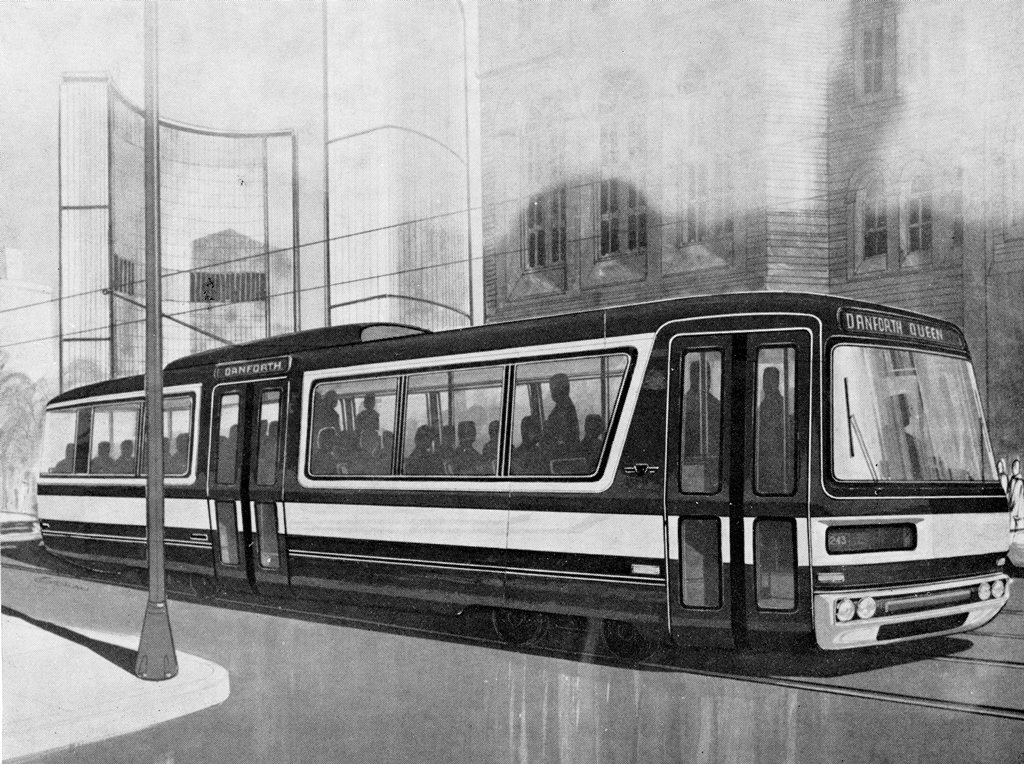Over five decades, I’ve had a hand in many of the issues described here, but I didn’t want this piece to give the impression of a one-man band. Many people contributed along the way including other activists, media, politicians, and professional staff within various agencies and consultants. My thanks to them all for being part of this journey.
Updated October 17 at 12:25 pm: Corrected opening date of Spadina streetcar (oops!)
When I was very young, I liked streetcars. A lot. Trains were OK, but streetcars were the genuine article. My Dad and I would go for rides around Toronto on most weekends exploring where all the lines went. Through him I got to know the world beyond Mount Pleasant and Eglinton and the loop where my local streetcar line ended.
I’m willing to bet that a lot of “transit advocates” and their equivalents in subways, buses and the mainline railways got their start that way. As such, I’m proud to be called a “railfan”, but not the pejorative term “trolley jolley” concocted by the anti-streetcar elements of the transit industry.
Roll forward to 1971. Toronto was a hotbed of citizen activism with the big focus of the Spadina Expressway, a road that would tear through downtown and provide the justification for even more destruction including the Crosstown, Scarborough and 400 South Expressways, not to mention conversion of local streets like Dundas and Front to serve as arterials through the core. This was an era when fighting City Hall was very much part of the body politic, and this was the context for my entry into transit activism.
The TTC planned to dismantle the streetcar system line-by-line up to 1980 when, yes, the Queen Subway would take over the heavy lifting of getting people into the business district and the streetcars would disappear.
TTC held on to its streetcars longer than most cities by buying up used vehicles as others disposed of them, often under the influence of a cabal of bus-gasoline-tire companies more than happy to finance the conversion. Streetcars came to Toronto from Cincinnati, Cleveland, Louisville (almost brand new, those), Birmingham and Kansas City. But the policy of streetcar abandonment had been in place for years, and the early 70s were to see the first lines go – St. Clair, Earlscourt and Rogers Road.
What would replace them? Trolleybuses. With the opening of the Yonge Subway north to York Mills Station, the TTC no longer needed a very frequent trolleybus service between Glen Echo Loop and Eglinton Station, itself a remnant of the Yonge streetcars that disappeared with the original subway in 1954.
Although this might have been the beginning of the end, the TTC made a crucial mistake: the level of service they planned for St. Clair was sized to the available trolleybus fleet, not to the existing capacity of the streetcar lines. In that era the peak service between Yonge and Oakwood ran every 60 seconds, and this was not a trivial route for service cuts.
The summer of 1972 saw the birth of the Streetcars for Toronto Committee under the leadership of Professor Andy Biemiller with political support from Aldermen (as they were then called) Paul Pickett and William Kilbourn. Later, Mayor David Crombie’s office lent support.
By October, the Committee was issuing press releases, making deputations and gaining political support from City Council. On November 7, 1972, the TTC board voted to reverse management’s position and to retain most of the streetcar system. The only exception would be the Rogers Road car that operated outside of the old City in York (a remnant of York Township Railways), and later the service on Mount Pleasant (a victim of bridge reconstruction at the Belt Line Railway).
This was not just a fight to save one car line, but for streetcars as the backbone of the old City of Toronto’s transit network, and as a basis for expansion into the suburbs, something the TTC had planned in the late 1960s.

Here are some of the Streetcars for Toronto Committee members at the TTC Board meeting.
From the left along the wall: the late Mike Filey and John Bromley, Chris Prentice, Steve Munro, Professor Andrew Biemiller and Alderman William Kilbourn. In the foreground at the table are Commissioner Gordon Hurlburt and Pat Paterson, General Manager of Engineering.
Not shown: Howard Levine, Robert Wightman, Ros Bobak.

In those days, the estimated cost of a new streetcar was quite low, and the TTC had already been working with Hawker-Siddeley (then proprietors of the Thunder Bay plant now owned by Alstom) on a design for an updated streetcar. These would be used both on exiting streetcar routes, pending the Queen subway, and on suburban lines to what is now Scarborough Town Centre, across the Finch hydro corridor, southwest through Etobicoke and even with a branch to the airport.

But Queen’s Park had other ideas, and in the same month, November 1972, Premier Bill Davis announced his scheme for a network of maglev trains that would criss-cross the city and make subways obsolete. The premise was that subways were too expensive, and buses were limited in speed and capacity. The “missing link” would be “GO Urban”.
Continue reading